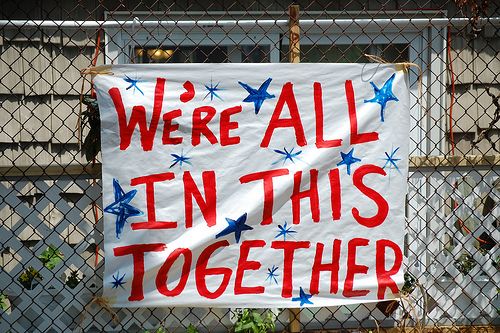• Leadership: Ownership
Leadership: Ownership
How do you create ownership in programming? How do create an environment that is conducive to ownership? How do you deal with saboteurs that seek and destroy a good plan? These are significant questions when it comes to developing new programs in children’s ministry.
There seems to be three ways that churches do this.
1. Some programming can come from the top down, which feels likes the program has been legislated for the followers and they have no voice—their only option is the accept or reject, take it or leave it.
2. Another alternative is to develop programs from the bottom up. This is a grassroots idea that there is agreement on among the rank and file, but the leaders have to be persuaded to come on board.
3. There is another possibility where the administration and the representative leaders come together from the middle and hammer out a plan. This is more of a process of give and take. It usually takes longer to come to conclusions. But the process is participatory and there is more discussion on the pros and cons.
The goal is agreement—a group consensus, if you please, where the group is united on the outcome, and every dissenting voice is heard and considered.
It is unanimous and the group speaks with one voice and the same voice is heard from all who agree, with little or no other story, but the conclusion.
We are in this together!
Here are My Eight Tips for helping CM leaders process for ownership:
- You need a good understanding of the problem you are trying to solve before you can enter into a process to recommend a solution.
- You must gather the representative leaders who need to weigh in on this process or it will derail or delay the forward movement of any program.
- All those that will be affected by this resolution or agreement, will also need time to process the changes.
- Anyone absent from the discussion must be brought on board or you risk this person being out of the loop and becoming the resistance to the plan.
- Sometimes, a good discussion, with no conclusion, means that it is tabled to be resolved at another time when all can agree. Do your homework.
- Once the decision is made and consensus occurs you encourage all to speak of the conclusion as one voice, one message. The emphasis is on the conclusion, not the process.
- The best way to implement change is to call for a trial period, to see how it goes and to allow feedback and adjustment. Tentativeness allows time for “by in,” feedback and adjustment.
- Processing for long-term change requires more time, go slowly!
“We must, indeed, all hang together, or assuredly we shall all hang separately.”
(Attributed to Benjamin Franklin, at the signing of the Constitution)







Leave a Comment